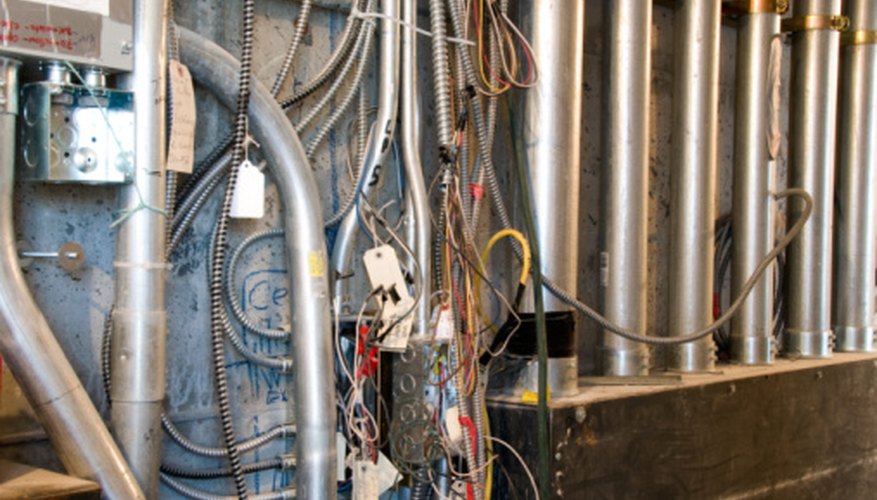Electric wiring in older homes ranges from perfectly usable to downright dangerous. Not only could old insulating material rot and expose hot wires, but systems that were designed to support a few lights and radios are now being asked to power computers, microwaves, hair dryers, refrigerators and many other modern devices. Before purchasing an old home, hire an electrician to evaluate the entire electrical system.
Knob and Tube
In this wiring system, porcelain "knobs" hold the wires in place as they stretch through open spaces within walls. Porcelain "tubes" direct wires through studs and joists. This system was common in homes built before about 1930, and many homes dating to this era still have the original knob-and-tube wiring in place. Homeowners might not need to replace this system if it is still in good condition, but splices and worn insulation are causes for concern.
- In this wiring system, porcelain "knobs" hold the wires in place as they stretch through open spaces within walls.
Armoured Cable
Knob-and-tube wiring was replaced with armoured cable. In this system, hot and neutral wires run through a flexible steel sheath, which provides a ground connection. The wires inside are insulated with rubber covered in cloth. According to "This Old House," homeowners should check the insulation about every five years and should ensure that the steel sheath is properly connected to a metal outlet box.
- Knob-and-tube wiring was replaced with armoured cable.
- In this system, hot and neutral wires run through a flexible steel sheath, which provides a ground connection.
Two-Wire Plastic-Sheathed Cable
This early version of the modern ROMEX® cable consists of wires sheathed in plastic. The plastic can be easily damaged. Because it contains only two wires, it is impossible to add grounded devices to this system.
Aluminium Wire
Aluminium wire does not necessarily need to be replaced, but it is more likely to cause problems than other types and must be inspected and maintained. Problems can occur at connections, and if this has happened in the past the homeowner will often see signs of arcing in switches and outlets. Flickering lights and a distinctive smell of burning metal also indicate a potential problem. This type of wiring usually dates to the 1960s and 1970s.
- Aluminium wire does not necessarily need to be replaced, but it is more likely to cause problems than other types and must be inspected and maintained.
- Problems can occur at connections, and if this has happened in the past the homeowner will often see signs of arcing in switches and outlets.
